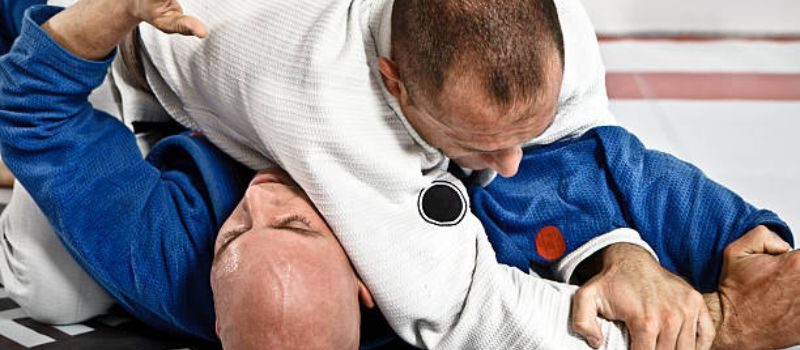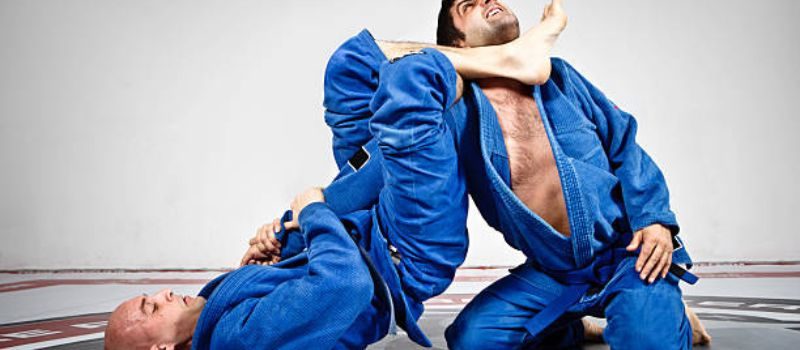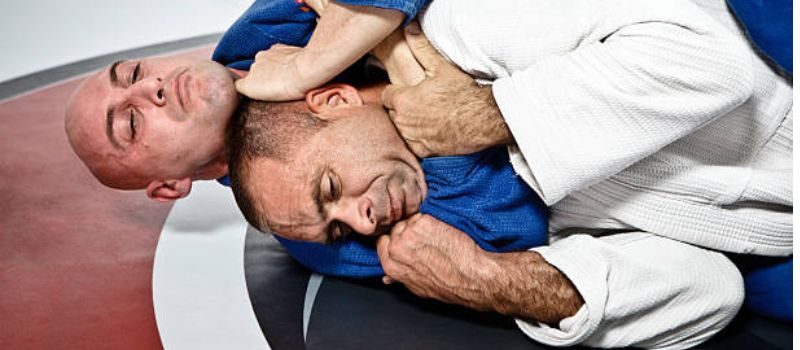As a dedicated enthusiast of submission wrestling, I’ve been enthralled by the intense and technical aspects of this grappling sport. Submission wrestling, a form of combat wrestling, is centered on the art of compelling an opponent to submit using a variety of holds and maneuvers. In this article, I will explore the intricate world of this, delving into its rich history, the various techniques, and offering tips for mastering this dynamic form of combat wrestling.
Why Mastering Submission Wrestling Techniques is Important
Mastering the nuances of submission grappling is essential for any wrestler aiming to succeed. It lays a solid foundation for triumph in the ring and broadens one’s grasp of wrestling submissions and self-defense. By refining your skills in this grappling martial arts, you cultivate a comprehensive set of moves that are applicable in numerous combat scenarios. Whether you’re a novice or a seasoned wrestler, proficiency in submission wrestling techniques can unlock new opportunities and propel your performance to unprecedented heights.

History and Evolution
The grappling history of submission wrestling is extensive, tracing back to ancient civilizations like Greece and China. In these early wrestling history, combatants employed a variety of holds and techniques to subdue their rivals. As time progressed, it underwent an evolution, integrating with other grappling styles to create the multifaceted techniques practiced today.A pivotal moment in the evolution of this was the rise of catch wrestling in the 19th century. This style, which became renowned thanks to wrestlers such as Karl Gotch and Billy Robinson, focused on the use of joint locks and wrestling submissions to compel an opponent to give in. Catch wrestling has been instrumental in shaping modern submission wrestling, influencing the development of other styles like Brazilian Jiu-Jitsu and Sambo.
Basic Techniques
To excel in this, mastering the basic wrestling techniques is crucial. These grappling fundamentals are the cornerstone of your grappling repertoire, paving the way for more complex maneuvers. Here are a few essential techniques that every wrestler should learn:
1 . Sleeper Hold:
The sleeper hold is a classic submission move that targets the opponent’s neck and cuts off the blood supply to the brain. By applying pressure to the carotid arteries, the wrestler can render their opponent unconscious.
2 . Abdominal Stretch:
The abdominal stretch is a versatile move that targets the core muscles of your opponent. By locking in the hold and applying pressure to the abdomen, you can cause significant discomfort and potentially force a submission.
3 . Surfboard:
The surfboard is a visually striking move that involves stretching your opponent’s arms behind their back while applying pressure to their midsection. This move not only inflicts pain but also restricts your opponent’s range of motion, giving you the upper hand.

Advanced Submission Wrestling Techniques
After you’ve solidified your grasp of the basics, you’re ready to tackle more sophisticated submission mma techniques. These advanced wrestling techniques demand greater skill and precision but can be extraordinarily potent when executed properly. Here are several advanced maneuvers to enhance your grappling repertoire:
1 . Spinning Toe Hold:
The spinning toe hold is a devastating submission move that targets the ankle joint. By twisting and applying pressure to the opponent’s foot, you can cause immense pain and potentially force a submission.
2 . Dragon Sleeper Hold :
The dragon sleeper hold is a variation of the traditional sleeper hold. In this move, the wrestler locks their hands around the opponent’s neck and applies pressure, restricting their breathing and causing them to submit.
3 . Octopus Hold :
The octopus hold is a complex submission maneuver that involves entangling your opponent’s limbs with your own. By immobilizing their arms and legs, you can exert control and force them into submission.
Tips for Improving You Skills
1 . Train with experienced wrestlers:
Surround yourself with skilled wrestlers who can provide guidance and challenge you. Training partners who are well-versed in this will push you to improve and expose you to new techniques.
2 . Focus on technique and leverage
It is not solely about strength; it relies heavily on technique and leverage. Pay attention to the fine details of each move and understand how to maximize your leverage for maximum effectiveness.
3 . Watch and study professional matches:
Study the techniques and strategies employed by professional wrestlers. Analyze their movements, transitions, and submissions to gain insights that you can incorporate into your own style.
4 . Condition your body:
Submissiaon wrestling demands physical endurance and strength. Incorporate strength training, cardiovascular exercises, and flexibility routines into your training regimen to improve your overall performance.
5 . Stay consistent and committed:
Progress in this takes time and dedication. Consistency is key, so train regularly and remain committed to your goals. Embrace challenges and setbacks as opportunities for growth.
Notable Submission Wrestling Moves
Certain notable wrestling moves and wrestling submission moves have gained fame for their effectiveness, even extending to the popularity of WWE submission moves. Let’s delve into a few of these distinguished techniques and their influence in the wrestling world:
1 . The Claw:
The claw, popularized by wrestler Baron Von Raschke, involves squeezing the opponent’s forehead and temples with a vice-like grip. This move inflicts extreme pain and can disorient the opponent, potentially leading to a submission.
2 . The Muta Lock:
Invented by the Japanese wrestler Keiji Mutoh, the Muta Lock is a submission hold that targets the opponent’s leg and knee. By hyperextending the knee joint, the wrestler can cause excruciating pain and force a submission.
3 . The Sugar Hold:
The Sugar Hold, also known as the Cattle Mutilation, is a submission move made famous by wrestler Bryan Danielson. This maneuver involves bending the opponent’s body into a contorted position, applying pressure to the neck, shoulders, and back.

Famous Wrestlers Known for Their Skills In This
Throughout the annals of professional wrestling, several athletes have carved out legacies as famous wrestlers, particularly for their expertise in pro wrestling submissions. Let’s spotlight a few wrestlers celebrated for their submission acumen:
1 . Kurt Angle:
Olympic gold medalist and professional wrestler Kurt Angle is revered for his technical prowess and extensive repertoire of submission moves. His ability to seamlessly transition between holds and submissions made him a dominant force in the wrestling world.
2 . Bret Hart:
Known as “The Hitman,” Bret Hart was a master technician in the ring. His trademark submission move, the Sharpshooter, became one of the most iconic submission holds in wrestling history.
3 .Ronda Rousey:
Making the transition from mixed martial arts to professional wrestling, Ronda Rousey brought her formidable submission skills to the WWE. Her judo background and proficiency in armbars made her a force to be reckoned with in the women’s division.
Conclusion
It is a captivating and dynamic combat sport that requires skill, technique, and determination. By mastering the submission wrestling techniques discussed in this article and continuously honing your skills, you can unleash your inner wrestler and dominate the mat. Embrace the history, study the techniques, and train diligently to become a formidable force in combat submission wrestling. Remember, the journey to mastery is a continuous one, and the rewards of discipline and dedication are well worth the effort.
Frequently Asked Questions (FAQs)
1. What is the difference between submission wrestling and other forms of wrestling?
It emphasizes the application of joint locks, submission holds, and grappling techniques to force an opponent to submit. Unlike traditional wrestling, which focuses on pinning an opponent’s shoulders to the mat, it aims to make the opponent concede through pain or discomfort.
2. Can anyone learn submission wrestling?
Indeed, individuals of various fitness levels and experience can learn this. With proper training, dedication, and a willingness to learn, anyone can develop their skills in this combat sport.
3. How can I find a submission wrestling gym near me?
To find a gym near you, you can search online directories, ask for recommendations from fellow wrestlers or martial artists, or contact local wrestling organizations for guidance.
4. Is submission wrestling dangerous?
Like any combat sport, it carries a degree of risk. However, with proper training, adherence to wrestling safety protocols, and supervision from experienced coaches, the risk of injury can be minimized.
5. Can submission wrestling help with self-defense?
Yes, it can be a valuable tool for self-defense wrestling. By mastering submission techniques, you gain the ability to control and neutralize opponents in close-quarters combat situations.
Feel free to comment down there,what you think about this blog



JPRaSjxNi